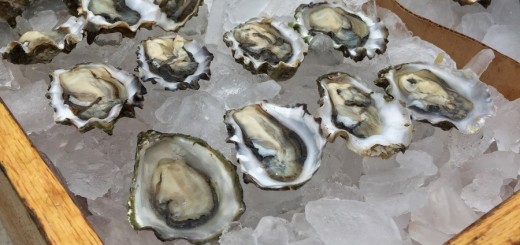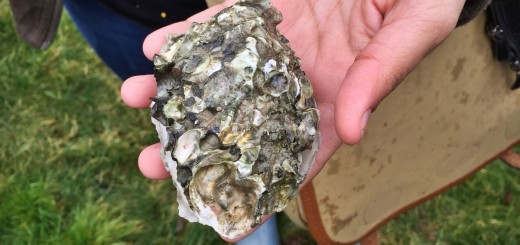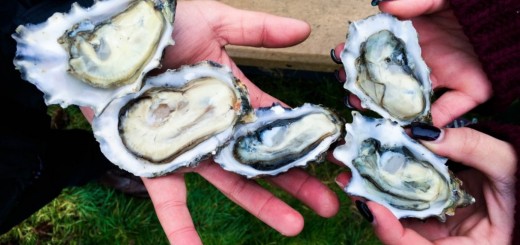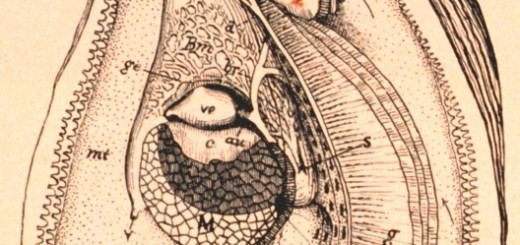Component 2: Natural History of Oysters
Female Pacific oysters release about 50-200 million eggs in a single spawning that when released form a small cloud after they make it outside the body. Male Pacific oysters release sperm in just about the same way. All of this happens (usually) during the warmest time of the year or when the water changes temperatures from winter to spring (20 degrees C). If the wild insemination is successful, the water will be infested with millions of microscopic Pacific oysters. They will begin their lives as one-footed Cyclops, swimming (a loose term, they really just move with the current and hope for the best) through the water while searching for the most optimal hard place to cement themselves (preferably other oyster shells due to the fact that they are also made from calcium carbonate) for the rest of their life. This stage is called the spat stage. This stage can last up to a few weeks depending on water salinity, temperature, and food supply. Millions of them begin this way, but majority of them will die before they find a nice hard place and even if they do, they could die due to lack of food and water flow in the place of their choosing. After they are happily cemented and they have survived the fight for best water filter ability and food, they will grow to market size in (hopefully) about 18 to 30 months. If they are left alone (they almost never are) they will live until the ripe old age of 30. In North America they can commonly be found from Southeast Alaska to Baja California. It is cultivated primarily on oyster farms in protected coastal estuaries; however, some wild beds exist in Washington and British Columbia. Suitable habitats for the pacific oyster can be hard to come by due to its finicky nature. It is threatened by bacterial and chemical pollution in its environment like runoff from urban areas, marinas, and sewage outfalls. Even though it would seem that there would be no real optimal place for these happy little critters, they really do enjoy being in Washington, Oregon, and California, basically just along the West Coast. On top of that, they’re fighters, an extremely hardy, disease-resistant species that has been known to out compete native species of shellfish for food and space and almost never becomes ill. Aside from all of this they’re still a very temperature tolerant species withstanding temps from -1.8 to 35 °C. Also they mainly feed on plankton and detritus. Their major predators (other than human beings) are many species of crabs (like Metacarcinus magister, Cancer productus, Metacarcinus gracilis), oyster drills, starfish (like Pisater ochraceus, P. brevispinus, Evasterias troschelii and Pycnopodia helianthoides), snails, seals, otters, basically anything larger than it that thinks it looks tasty or any sort of filter feeder than can eat it while its still a larvae or spat. The parasites and diseases that affect it the most are: Denman Island disease which is a Protozoan parasite, Nocardiosis which is a Bacterium, Oyster velar virus disease which is a virus, and Herpes-type virus disease of C.gigas larvae which is also a virus.The productivity of the oyster industry can be defined by how much meat is in the oyster they produce and the size but is mainly determined by mortality or the oysters they farm. Mortality is the hardest thing to control due to the average thing like natural mortality but also crazy and forever changing conditions like, predators, disease, environmental conditions (ice, freak winds), competition for space (crowding of cultch), silting (sediment runoff from land) and cluster separation (process of breaking up clusters of oysters to into as many individual oysters as possible). On top of that ocean acidification can keep the oyster from growing and then it will just die from exhaustion basically. (Alexis Allen)
Oyster hatcheries allow for companies to mass produce oysters at a commercial rate. These techniques are well established and have been used for years and years. Most hatcheries have water pumps that pump saltwater to nurseries, which usually can pump about 10-25 gallons of water per minute to ensure a adequate amount of water flow. Good water is critical to successful production, mixing eggs, sperm and growing larvae must be treated properly to guarantee oysters.(Savannah Moffet)





